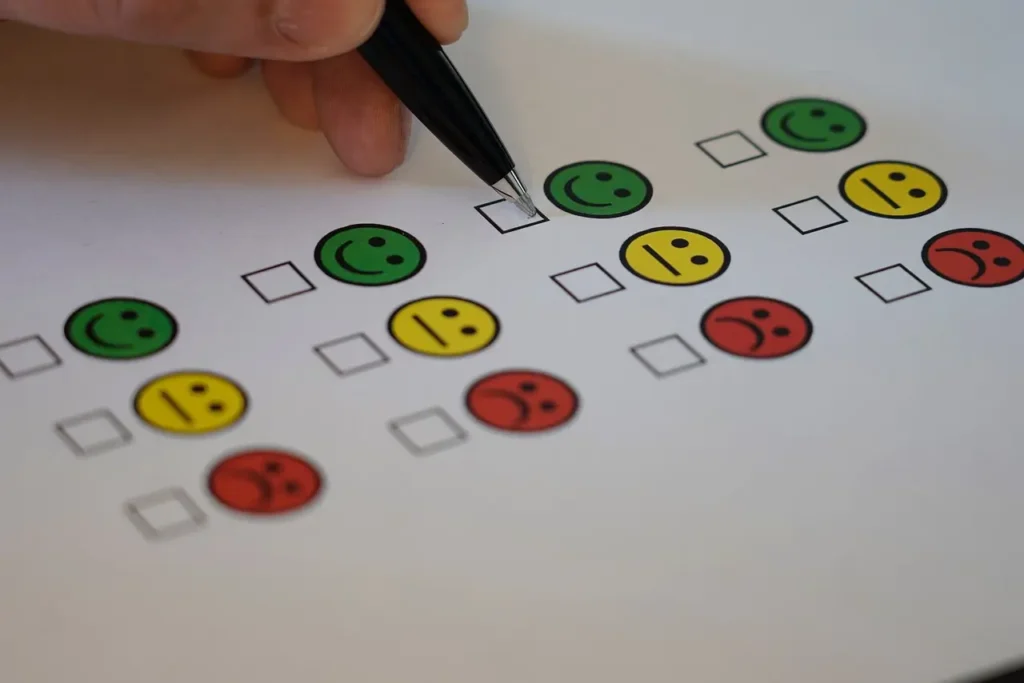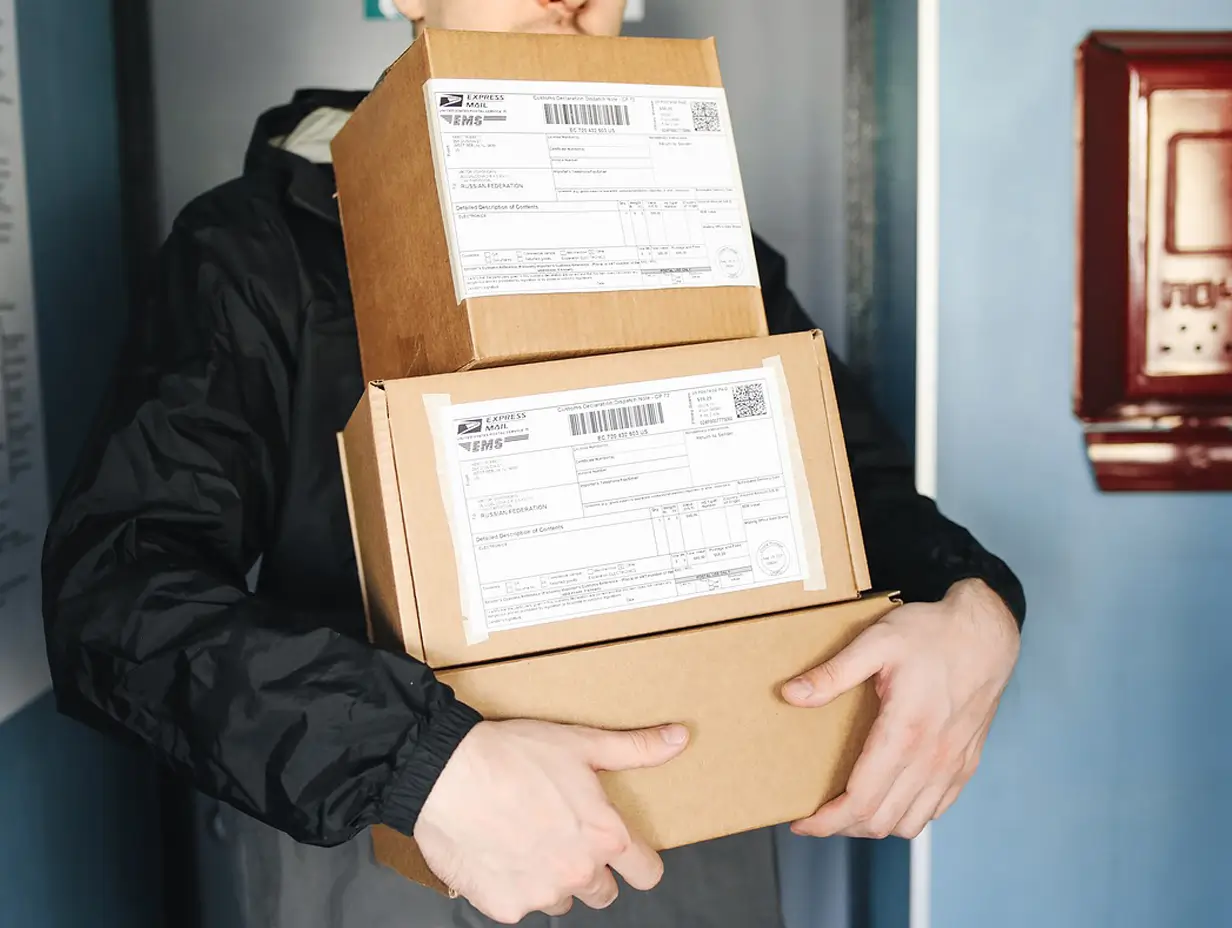Table of Contents
Introduction
Have you ever stumbled upon an offer to test products for free or wondered about the legitimacy of those enticing ads promising rewards for your opinions?
You’re not alone.
In a world brimming with offers that seem too good to be true, it’s natural to tread cautiously. Scams, unclear compensation, and the balance of time versus reward are genuine concerns for many diving into product testing.
Add to that the anxiety over product safety and data privacy, and it’s clear why many are hesitant. But what if you could navigate through these challenges with ease and confidence?
Our comprehensive guide is tailored to debunk the myths and reveal the truth behind product testing. We delve deep into legitimate opportunities, helping you understand where and how to safely engage in product testing while protecting your privacy and ensuring your efforts are worthwhile.
Stay tuned as we unfold the secrets to turning your opinions into rewards effectively and securely.
So, without further ado, let’s dive in.
Key Takeaways
- Legitimacy Matters: Learn to distinguish between legitimate product testing sites and scams, focusing on transparent terms, privacy policies, and the absence of upfront costs.
- Diverse Testing Options: Explore various types of product testing like In-Home Usage Tests, Online Surveys, and Focus Groups, each offering unique experiences and commitments.
- Become a Preferred Tester: Increase your selection chances by creating a detailed profile, staying active, and providing honest, quality feedback on platforms.
- Informed and Engaged: Stay informed and actively engage with testing communities and opportunities to enjoy the benefits and avoid the pitfalls of product testing.
Dive Into the World of Product Testing: What’s Your Style?
Let’s break down the main types, so you know exactly what you might be diving into!
| Type of Test | What It Involves | Typical Commitment |
| In-Home Usage Tests | Using a product in your daily life, providing detailed feedback. | Medium to Long |
| Online Surveys | Providing opinions or selecting preferences via online platforms. | Short |
| Focus Groups | Participating in group discussions about a product. | Medium |
| Beta Testing | Testing pre-release software or products, reporting bugs. | Medium to Long |
| Mystery Shopping | Visit stores and provide feedback on products and services. | Medium |
| Diary Studies | Recording experiences with a product over a set period. | Long |
In-Home Usage Tests (IHUTs)
Fancy trying out products in the comfort of your home? IHUTs are for you. Companies send you products to use as you would typically over a certain period.
You might get anything from kitchen gadgets to skincare products. Afterward, you’ll provide detailed feedback about your experience, often through surveys or journals. It’s all about real-world use!

Online Surveys
These are the most accessible types of product testing. There is no need to test the product physically; instead, you’ll review concepts, packaging, or ideas online. It could be as simple as choosing the best logo or providing feedback on a product description.
Quick, easy, and you can do it in your PJs!
Focus Groups
Ready to share your thoughts in a group setting?
Focus groups involve a moderated discussion with several participants. You’ll discuss the product, your perceptions, and your preferences. It’s a deeper dive into consumer psychology; your opinion helps shape future products.
These sessions can be in-person or online, but they’re always interactive.
Beta Testing
Tech-savvy? Beta testing might be up your alley.
It’s mainly used for software, apps, or websites before they go live. You’ll use the product to report any bugs or issues and provide feedback on usability and features. It’s critical work to ensure the product is ready for the masses.
Mystery Shopping
Like shopping and observing?
As a mystery shopper, you’ll visit stores, purchase products, or interact with staff. Then, you’ll provide detailed reports on your experience, from customer service to product placement.
It’s a bit of covert ops in the consumer world!
Diary Studies
For a more prolonged observation, diary studies involve recording your experiences with a product over time. You might take notes, photos, or even videos detailing how you use the product and any changes in perception or satisfaction. It’s a way for companies to understand long-term usage patterns.

Is Product Testing Legit?
Let’s face it: the idea of receiving products or compensation just for giving your opinion sounds pretty sweet. But it’s also normal to question whether this is all too good to be true.
Here’s the scoop: Yes, product testing is legit! Many companies genuinely seek feedback on their products to improve or market them better. However, like any online activity, it comes with its fair share of scammers trying to exploit eager testers. The key is knowing how to spot the real deals from the fakes.
Legitimate opportunities usually come from well-known brands or established market research firms. They’ll clearly state your expectations and what you’ll get in return. No legitimate company will ask for sensitive personal information upfront or charge you to join their testing program.
So, while there’s a world of genuine product testing opportunities, tread carefully. Do your research, read reviews, and always trust your gut. With a bit of vigilance, you can indeed turn your opinions into rewards.
Suggested Reading: Turn Clutter into Cash: Your Ultimate Guide to Selling Used Appliances
Spot the Difference: Legit vs. Scam Product Testing Sites
In the intriguing world of product testing, distinguishing the legit from the scams is crucial. Here’s a friendly guide to help you navigate these waters with confidence.
Firstly, genuine product testing sites are usually tied to well-known brands or reputable market research firms. They want your honest feedback to improve their products or marketing strategies.
Conversely, scam sites often lure you with exaggerated promises of valuable products or hefty payments.
Here are some tips and red flags to help you separate the wheat from the chaff:
- Research is Your Best Friend: Start with a quick internet search. Look for reviews or discussions about the site. If it’s a scam, chances are someone’s complained about it online.
- No Clear Terms? No Thanks!: Legitimate sites will tell you exactly what you expect and receive. If the site’s vague about the process or the rewards, that’s a red flag.
- Guard Your Info: Never give out sensitive personal information like your social security number or bank details. Legit testing opportunities might need basic contact info, but they won’t ask for your life story.
- Upfront Costs? Run!: If a site asks for payment to access testing opportunities, it’s likely a scam. Genuine product testing is free to join; the whole point is to test products, not to turn you into a customer.
- Too Good to Be True?: If the offer seems too generous for the task, be wary. Scammers often bait with unbelievable rewards to catch as many people as possible.
- Check for Official Affiliations: Look for signs of legitimate partnerships or endorsements. If a well-known brand uses a third-party site for product testing, they’ll often link to it from their official website.
- Communication is Key: Pay attention to how the site communicates with you. Scam sites often have numerous typos, grammar mistakes, or over-the-top language. Professional sites maintain a certain standard in their communication.
- Privacy Policy Perusal: A legitimate site will have a clear, comprehensive privacy policy indicating how your data will be used. Reading the fine print can be a bit tedious, but it’s a worthwhile exercise.
Remember, the internet is a mixed bag of opportunities. With diligence and these handy tips, you can confidently navigate the product testing landscape. Keep your wits about you, and soon, you’ll be reaping the rewards of legitimate product testing.
Best Product Testing Websites
Influenster
Influenster is a noteworthy platform in product testing, presenting a broad spectrum of products for testing spanning beauty, skincare, food and beverages, and household items, among others.
Unlike other platforms that may offer monetary compensation, Influenster operates by providing free products to individuals in return for their honest reviews and sharing on social media platforms.
The process aids brands in garnering authentic feedback and spreading word-of-mouth awareness about their products.
Additionally, active participants on Influenster will find themselves earning badges, which not only signify their engagement level but also potentially qualify them for various contests hosted by the platform.
BzzAgent
BzzAgent offers a diverse range of products from categories such as beauty, food, health, and household items for individuals to test. The modus operandi of BzzAgent is simple yet effective: it provides free products to individuals who, in turn, are expected to provide their honest feedback and reviews on these products.
BzzAgent does not offer cash rewards.
However, the perk is that individuals get to keep the products they test. This can be a rewarding experience, especially when the items are of high quality or personal interest.
Smiley360
Smiley360 is an engaging platform that invites individuals to test a range of consumer products. The engagement mechanism on Smiley360 is designed to provide free products to individuals in exchange for their genuine opinions and experiences shared across social media platforms and through online surveys.
Through sharing insights on their experiences, individuals contribute to a broader dialogue about the products while enjoying the perks of testing new items from various categories.
SampleSource
SampleSource is another remarkable platform, offering a curated mix of products through its sample boxes. These boxes encompass a variety of categories, providing a broad spectrum for individuals interested in exploring new products.
The reward system on SampleSource is designed to benefit both the consumers and the brands. Individuals receive free samples and coupons that allow them to try new products and save on future purchases.
In return, they are expected to provide honest feedback on the products they have tried, creating a cycle of valuable consumer insight that brands can leverage for improvement and better market positioning.
PinchMe
The range of products provided by PinchMe encompasses categories such as beauty, pet, baby, and household items, which enables a wide demographic to find products that align with their interests and lifestyles.
The underlying premise of PinchMe is to provide free samples to individuals in exchange for honest product feedback.
Although no monetary compensation is involved, the benefit is that individuals get to keep the products they test, which can be lucrative.
Toluna
Toluna offers product testing opportunities across numerous categories. The platform adopts a points-based reward system, where members accrue points by participating in product testing and surveys.
These accumulated points can be redeemed for gift cards and other rewarding incentives. This model provides a tangible benefit to the participants and encourages a more active engagement with the platform, fostering a community of avid product testers and opinion sharers.
Swagbucks
Swagbucks is a multifaceted platform known predominantly for its survey offerings, yet it also occasionally extends opportunities for product testing. Members of Swagbucks can earn points, known as Swagbucks or SB, by participating in these product testing ventures and completing surveys.
The amassed points present a pathway to various rewards; they can be redeemed for gift cards or even converted to cash via PayPal, providing a flexible reward system for the participants.
Survey Junkie
Survey Junkie is a platform primarily centered around providing survey opportunities to its members, though it diverges into the realm of product testing on occasion.
Participants on Survey Junkie can accrue points by engaging in both these activities — taking surveys and testing products. The acquired points serve as a currency that can later be exchanged for gift cards or cash via PayPal, according to the member’s preference.
Although product testing opportunities might be sparse compared to its core survey offerings, when available, they provide a valuable avenue for members to interact with and evaluate products while earning rewards.
Get Picked Every Time: Tips for Becoming a Preferred Product Tester
Becoming a preferred tester isn’t just about luck. It’s about strategy!
Here’s how to boost your chances of being selected for those coveted product testing opportunities.
| Tips | Description | Impact Level |
| Create a Stand-Out Profile | Fill your profile with detailed, honest information about your lifestyle, preferences, and demographics. | High |
| Stay Active on Platforms | Regularly log in, participate in surveys, and update your profile. | High |
| Provide Quality Feedback | Give detailed, constructive, and honest reviews of your testing experiences. | High |
| Follow Instructions | Adhere to the guidelines and timelines given by the product testing program. | Medium |
| Network and Refer Friends | Increase visibility and potential for selection by being active in community forums and referring others. | Medium |
| Apply Broadly but Selectively | Apply for products that fit your interests while keeping a wide scope to increase chances. | Medium |

Create a Stand-Out Profile
Your profile is like your resume. Fill it with rich details about your interests, lifestyle, and demographics. Companies look for specific criteria when selecting testers. Be honest and thorough about your hobbies, preferences, and household details. The more info you provide, the easier it will be for them to see you’re a fit!
Stay Active on Platforms
Regular activity is key. Log in frequently, participate in any available polls or surveys, and keep your profile updated. The more engaged you are, the more likely you will be noticed and chosen for testing opportunities.
Build a Reputation for Quality Feedback
Once you get a testing gig, shine with your feedback! Be detailed, constructive, and honest in your reviews. Highlight what you loved, what could be improved, and your overall experience using the product. High-quality feedback makes you a valuable tester, and companies will likely come back to you for more.
Follow Instructions Carefully
Each testing opportunity comes with its own set of rules. Make sure to follow them closely. Whether completing tasks by a deadline or providing feedback in a specific format, showing that you can follow directions is crucial.
Showcase Your Influence
Make it known if you have a blog, YouTube channel, or strong social media presence! Brands love testers who can provide feedback and spread the word about their products. Share your reviews and experiences with your followers to increase your attractiveness as a tester.
Be Consistent and Reliable
Companies prefer dependable testers. Consistently engaging with platforms and providing timely feedback will build your reputation as a reliable tester. Make sure to complete all required tasks and communicate if any issues arise.
Network and Refer Friends
Sometimes, being active in community forums and referring friends to the platform can increase your visibility and chances of getting selected. Engage with other testers, share tips, and be positively present in the community.
Apply Broadly but Selectively
Apply for products that interest you or fit your lifestyle. Your enthusiasm will show in your application and feedback. However, don’t limit yourself to just one type of product or platform. The more you apply, the better your chances of getting picked.
Conclusion
Navigating the world of product testing is about staying informed, active, and engaged. By understanding how to spot legitimate opportunities, knowing the types of testing available, and becoming a preferred tester through quality engagement, you can confidently explore and enjoy the benefits of product testing.
Remember, your feedback is valuable, and with the right approach, you can ensure a rewarding and scam-free experience. So, embrace these strategies, avoid common pitfalls, and get ready to influence the market with your insights!
FAQs
Can anyone become a product tester, or are there specific qualifications?
Almost anyone can become a product tester! While there are no strict qualifications, companies often look for testers who fit certain demographic profiles or have specific interests relevant to the product. The key is to have a well-detailed profile and be active on legitimate product testing platforms.
How much time must I dedicate to product testing?
The time commitment varies depending on the type of product testing. Simple surveys might take a few minutes, while In-Home Usage Tests or Diary Studies could require a few weeks of your time. You can choose opportunities that fit your schedule.
Are there any costs involved in becoming a product tester?
Legitimate product testing opportunities should not cost you anything. In fact, they provide the product for free or offer compensation. Be wary of any platform that asks for payment to access testing opportunities; these are often scams.
How do I receive the products for testing?
For physical product tests, the company will typically mail the product directly to your home with instructions on how to use it and provide feedback. You’ll usually receive a download link or access code for digital products.
Can product testing become a full-time job?
While product testing can provide some rewards and free products, it’s generally not enough to be considered a full-time job. It’s best viewed as a hobby or a way to access free products and extra income rather than a primary source of income.

